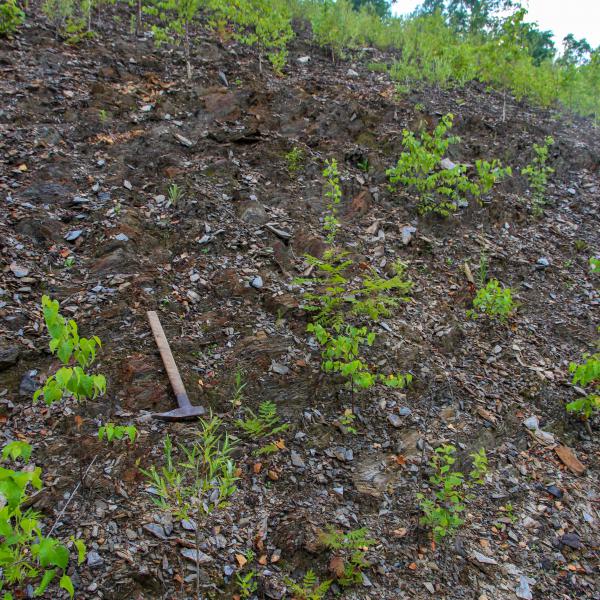World rocks photo collection
Biotite-muscovite-albite-quartz schists
Россия, Амурская область, правый борт ключа Ужанинский, врез автодороги Хабаровск-Чита. Урильская свита. Слюдяные сланцы с тонкими прослойками графитистых сланцев, мощностью 550 м. Сланцы обладают лепидогранобластовой и гранолепидобластовой структурами и состоят нз кварца (30—65%), альбита (13—60%), биотита (5—35%), графита (0—32%), хлорита (0—25%), мусковита (0—20%), реже граната, амфибола, микроклина. Акцессорные минералы представлены сфеном и апатитом. В зависимости от количественного соотношения этих минералов выделяются двуслюдяные-альбит-кварцевые, хлорит-альбит-кварцевые, графитистые и другие сланцы. На фотографии в обнажении и в образце биотит-мусковит-альбит-кварцевый сланец.
Russia, Amur region, right side of the Uzhaninsky spring, cut of the Khabarovsk-Chita highway. The Uril Formation. Mica schists with thin interlayers of graphitic schists, 550 m thick. The schists have lepidogranoblastic and granolepidoblastic structures and consist of quartz (30-65%), albite (13-60%), biotite (5-35%), graphite (0-32 %), chlorite (0-25%), muscovite (0-20%), rarely garnet, amphibole, microcline. Accessory minerals are sphene and apatite. Depending on the quantitative ratio of these minerals, two-mica-albite-quartz, chlorite-albite-quartz, graphitic and other schists are distinguished. The photograph shows biotite-muscovite-albite-quartz schist in the outcrop and in the sample.


Comments
Add new comment